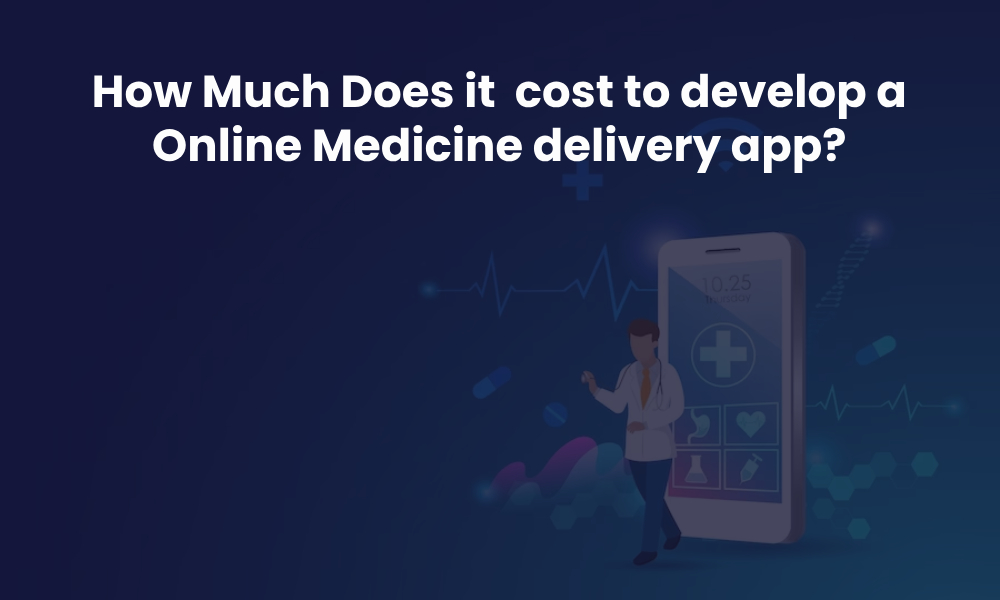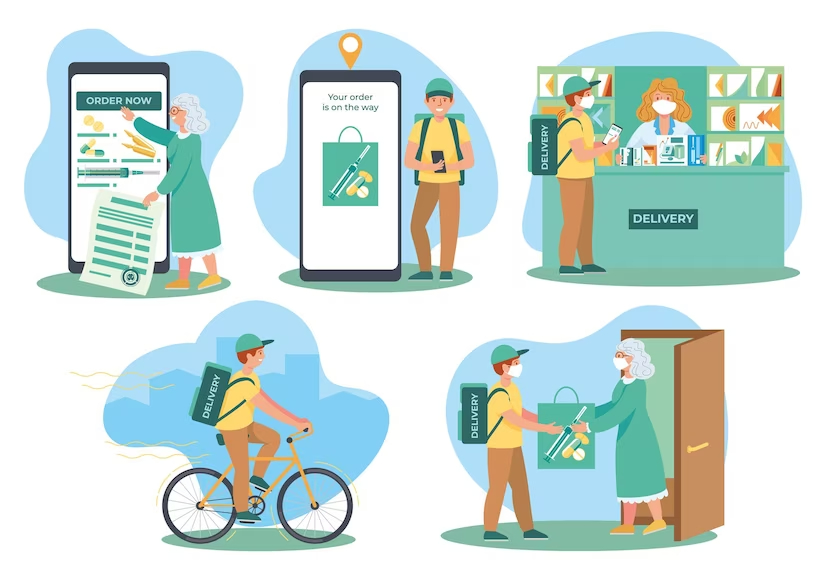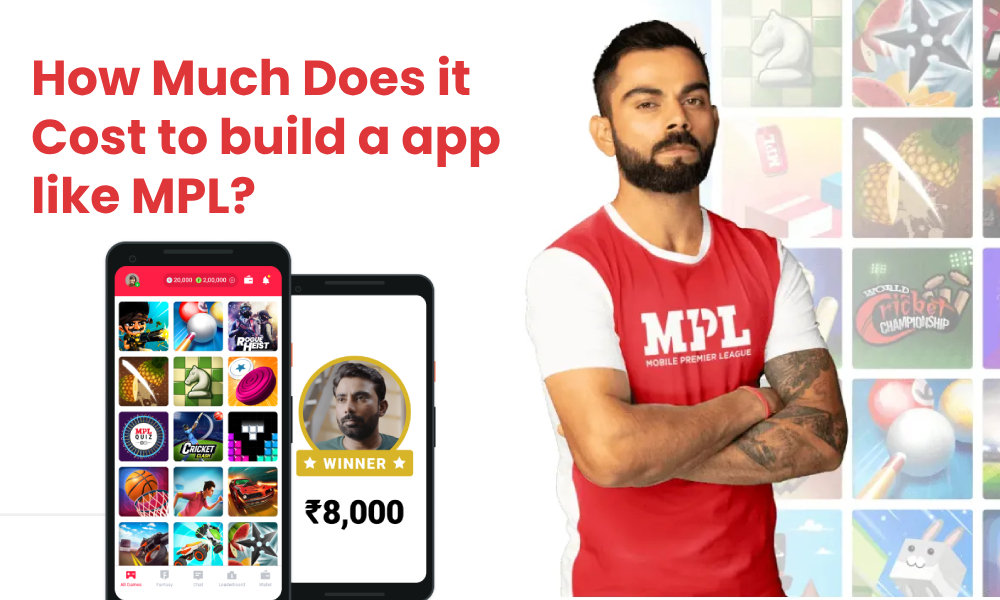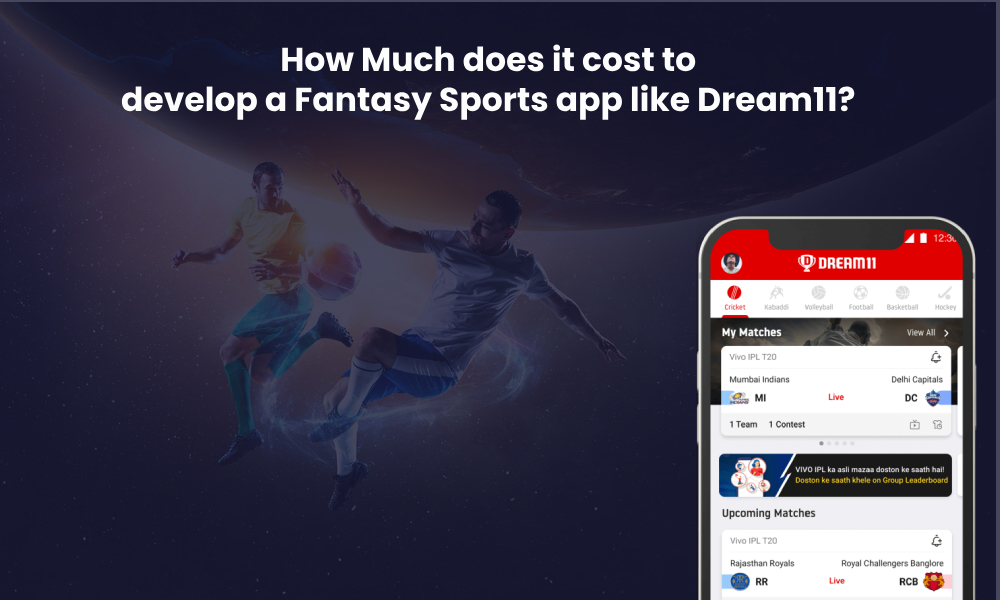
Welcome to the digital age of healthcare convenience! Imagine having the power to order your prescription medications, wellness products, and health essentials from the comfort of your home, and having them arrive at your doorstep at the tap of a button. This modern marvel is none other than the online medicine delivery app – a technological innovation that has reshaped the way we access and manage our healthcare needs.
Gone are the days of rushing to the pharmacy amidst busy schedules, or standing in long queues with a prescription in hand. With the advent of online medicine delivery apps, we are witnessing a revolution in the pharmaceutical and healthcare industry. But have you ever wondered what goes on behind the scenes to bring this seamless experience to life? What are the intricate gears and cogs that make this digital ecosystem function flawlessly?
In this comprehensive exploration, we are delving deep into the world of app development, demystifying the process, and uncovering the factors that influence the cost of creating your very own online medicine delivery app. Whether you’re a curious tech enthusiast, an aspiring app developer, or an entrepreneur with a vision to transform healthcare accessibility, this journey is bound to enlighten and intrigue you.
By the end of this journey, you’ll not only gain a profound understanding of what it takes to develop an online medicine delivery app but you’ll also be equipped with the knowledge to make informed decisions, whether you’re considering creating your own app or simply curious about the digital magic that powers this remarkable service.
Let’s dive in and unveil the mysteries that drive the convenience of healthcare to your fingertips – it’s time to discover the true cost of developing an online medicine delivery app.
Benefits of building an Online Medicine delivery app
Building your own online medicine delivery app can offer a wide range of benefits to app owners. Here are some key advantages:
Revenue Generation: One of the primary benefits is the potential for substantial revenue generation. App owners can earn revenue through various channels, such as delivery fees, service charges, subscription models, and partnerships with pharmacies or healthcare providers.
Market Share and Growth: With the increasing demand for convenient healthcare solutions, owning an online medicine delivery app provides the opportunity to capture a significant share of the market. As more users adopt the app, it can lead to exponential growth.
Brand Recognition and Loyalty: Having your own app establishes your brand as a player in the digital healthcare space. Providing a reliable and user-friendly platform can foster customer loyalty and brand recognition.
Direct Customer Interaction: The app serves as a direct channel for interacting with users. You can send personalized notifications, offers, and updates, fostering engagement and building a stronger relationship with your user base.
Data-Driven Insights: The app can collect user data that provides valuable insights into user behavior, preferences, and patterns. This data can help you refine your offerings, tailor marketing strategies, and make informed business decisions.
Diversification of Services: Beyond medication delivery, you can expand your services to include telemedicine consultations, health products, wellness programs, and more. This diversification can increase revenue streams and cater to a broader range of user needs.
Partnerships and Collaborations: Owning an app can open doors to partnerships with pharmacies, healthcare providers, pharmaceutical companies, and other stakeholders. These collaborations can lead to mutually beneficial business relationships.
Continuous Innovation: As an app owner, you have the flexibility to continually update and enhance the app’s features, keeping it current and aligned with user expectations. This ongoing innovation can attract and retain users.
Different Business Models of Online Medicine Delivery Apps

Online medicine delivery apps employ various business models to cater to the needs of their users while ensuring profitability. Here are some of the common business models used by some of the best online medicine delivery apps:
Direct-to-Consumer Model:
In this model, the app partners with pharmacies and offers users a platform to order medicines directly from them. The app earns revenue through delivery charges, service fees, and possibly a percentage of the medication cost.
Subscription Model:
Apps may offer subscription plans where users pay a recurring fee to access benefits such as free or discounted deliveries, priority service, and exclusive offers. This model can encourage customer loyalty and provide a steady revenue stream.
Platform as a Service (PaaS) Model:
Some apps act as a platform connecting pharmacies, users, and delivery partners. They charge pharmacies and healthcare providers for the privilege of using their platform to reach a broader audience.
Telemedicine Integration Model:
Apps that integrate telemedicine services offer users the option to consult with healthcare professionals through the app. Revenue is generated through consultation fees paid by users and a percentage taken by the app platform.
Marketplace Model:
Similar to e-commerce marketplaces, some apps aggregate products from various pharmacies and healthcare providers. Revenue is generated through commissions on sales made through the app.
Partnership Model:
Apps partner with pharmacies, pharmaceutical companies, and healthcare institutions to offer users discounts, promotional offers, or exclusive deals.
Revenue may come from these partnerships or through a percentage of transactions facilitated by the app.
White-Label Model:
Some technology companies offer white-label solutions to pharmacies and healthcare providers, allowing them to have their own branded apps for online medicine delivery. Revenue is generated through licensing fees, setup charges, and possibly transaction fees.
Advertising Model:
Apps can generate revenue by displaying advertisements for health and wellness products within their platform. Brands pay to promote their products to a targeted audience of app users.
Freemium Model:
Some apps offer a basic version of their service for free and charge users for premium features such as faster deliveries, priority support, or additional health-related services.
Data Monetization Model:
Apps collect user data and provide insights to pharmaceutical companies, healthcare institutions, and other stakeholders. Revenue is generated by selling aggregated and anonymized data.
Combo Services Model:
Apps diversify their offerings beyond medicines, incorporating additional health and wellness services such as fitness products, supplements, consultations, and more.
Revenue is generated through sales of these additional products and services.
Building a successful online medicine delivery app requires a comprehensive set of features that cater to the needs of both users and administrators.
Here are different panels and the features you can integrate into your app:
User Panel:
Registration and Profile:
User registration and login through email, phone number, or social media accounts.User profile management with personal information, medical history, and preferences.
Search and Browse:
Easy-to-use search functionality to find medicines, products, and healthcare items.Filter and sorting options to narrow down search results.
Prescription Management:
Option to upload prescriptions, store them securely, and request refills.
Prescription verification by pharmacists.
Medication Ordering
Selection of medicines, dosages, and quantities.
Quick order placement and review of selected items.
Secure Payment:
Integration with various payment gateways for secure online payments.
Option to save payment methods for future orders.
Delivery Options:
Choice of delivery address and preferred delivery time slots.
Real-time tracking of order status and estimated delivery time.
Medication Reminders:
Customizable medication reminders to ensure timely doses.
Push notifications for scheduled medication times.
Customer Support:
In-app chat, email, or phone support for user inquiries and assistance.
Help section with frequently asked questions.
Order History:
View past orders, invoices, and medication history.
Option to reorder previous prescriptions.
Ratings and Reviews:
Ability to rate and review products, services, and delivery experiences.
Feedback submission to improve the app and service quality.
Pharmacy/Provider Panel:
Pharmacy Registration and Verification:
The registration process for pharmacies/providers with relevant documents.
Verification process by the app admin to ensure authenticity.
Inventory Management:
Upload and manage available medicines and products.
Update stock levels in real time.
Order Processing:
Receive and process incoming orders.
Prepare orders for delivery with accurate packaging.
Prescription Verification:
Verify and validate prescriptions submitted by users.
Communicate with users if additional information is required.
Delivery Management:
Assign orders to delivery personnel or third-party couriers.
Monitor order status and track deliveries.
Promotions and Discounts:
Create and manage promotional offers, discounts, and loyalty programs.
Update prices and offer exclusive deals.
Customer Support:
Communication channel to address user inquiries and concerns.
Provide assistance in case of order issues.
Admin Panel:
Dashboard and Analytics:
Overview of user activities, orders, revenues, and other key metrics.
Insights into popular products and user behavior.
User Management:
Manage user accounts, profiles, and access levels.
Verify pharmacies/providers during registration.
Content Management:
Update app content, banners, and promotional material.
Manage product catalog and categories.
Order Monitoring:
Monitor incoming orders, their status, and delivery progress.
Handle order-related issues and exceptions.
Reporting and Analytics:
Generate reports on sales, revenues, user engagement, and more.
Analyze data to make informed business decisions.
Pharmacy/Provider Management:
Approve new pharmacies/providers and manage their profiles.
Ensure compliance with regulations and quality standards.
Promotion Management:
Create and manage promotions, discounts, and special offers.
Monitor the effectiveness of promotional campaigns.
Notifications and Alerts:
Send push notifications and alerts to users and pharmacies/providers.
Notify users about promotions, order updates, and important information.
Remember that the specific features you choose to integrate will depend on your app’s unique value proposition, target audience, and business goals. A well-designed app with a comprehensive set of features can enhance user experience, drive engagement, and contribute to the success of your online medicine delivery platform.
How to Build an Online Medicine delivery app?
Building an online medicine delivery app requires careful planning, technical expertise, and a thorough understanding of the healthcare and technology domains. Here’s a detailed step-by-step guide on how to build an online medicine delivery app:
- Market Research and Idea Validation:
Conduct thorough market research to understand the demand, competition, and user expectations in the online medicine delivery space.
Identify your target audience, their pain points, and the features they expect from the app.
Validate your app idea by seeking feedback from potential users and stakeholders.
- Define App Features and Functionalities:
List down the core features your app will offer, including user registration, prescription upload, order placement, payment integration, real-time tracking, and more.
Prioritize features based on their importance and feasibility.
- Choose the Technology Stack:
Select the technology stack for your app’s front-end (mobile app) and backend (server and database).
Common choices for front-end include native development (iOS and Android) or cross-platform frameworks like React Native or Flutter. For the backend, you might use programming languages like Python, Node.js, or Ruby.
- Wireframing and Design:
Create wireframes and mockups of your app’s user interface (UI) to visualize the layout and navigation.
Design an intuitive and user-friendly UI/UX that aligns with your brand identity.
- Backend Development:
Develop the backend infrastructure to handle user data, orders, prescriptions, payments, and other app functionalities.
Implement APIs for communication between the front-end and backend.
- Front-end Development:
Develop the mobile app‘s front end based on the wireframes and designs.
Implement user registration, login, product catalog, prescription upload, order placement, and tracking features.
- Prescription Verification:
Implement a system for pharmacists to verify prescriptions uploaded by users. This may involve communication between users, pharmacists, and backend systems.
- Payment Integration:
Integrate secure payment gateways to facilitate online transactions.
Ensure compliance with data security and privacy regulations.
- Real-Time Tracking and Notifications:
Implement real-time tracking features that allow users to track the status and location of their orders.
Set up push notifications to keep users informed about order updates, delivery times, and promotions.
- Testing:
Conduct rigorous testing to identify and fix bugs, glitches, and performance issues.
Perform user testing to ensure a seamless and intuitive user experience.
- Launch and Deployment:
Deploy the app to app stores (such as Apple App Store and Google Play Store) or enterprise distribution platforms.
Promote the app through marketing efforts and launch campaigns.
- Data Security and Compliance:
Ensure the app complies with data protection regulations (such as GDPR or HIPAA) if it handles sensitive user information.
Implement encryption and security measures to protect user data.
- Feedback and Iteration:
Gather user feedback after the app is launched and analyze user behavior and engagement.
Use this feedback to identify areas for improvement and plan updates or new features.
- Marketing and Promotion:
Create a marketing strategy to promote your app to your target audience.
Utilize various channels such as social media, influencer partnerships, and online advertisements.
- Continuous Maintenance and Updates:
Regularly update the app to fix bugs, improve performance, and add new features.
Stay updated with technological advancements and user preferences.
Remember that building an online medicine deliver
What factors influence the Online Medicine delivery app development cost?
App Complexity and Features:
The number and complexity of features you want to include in your app, such as user registration, prescription management, real-time tracking, payment integration, notifications, telemedicine, and more.
Design and User Experience (UI/UX):
The level of design sophistication, user interface elements, animations, and overall user experience you aim to provide.
Platform and Devices:
Developing for different platforms (iOS, Android, web) and accommodating various device sizes and resolutions increases development time and costs.
Backend Development:
Building a robust backend infrastructure to handle user data, orders, prescriptions, and interactions between users, pharmacies, and delivery personnel.
Third-Party Integrations:
Integrating external services like payment gateways, mapping services, SMS notifications, and telemedicine platforms.
Geographic Location of Development Team:
The hourly rates of developers, designers, and other team members are based on their location. Developers from different regions have varying cost structures.
| Country | Salesforce | MERN/MEAN | Java | .NET | ROR | ReactJS | VueJS |
|---|---|---|---|---|---|---|---|
| United States | $100 - $250 | $75 - $150 | $80 - $150 | $75 - $140 | $75 - $130 | $70 - $150 | $70 - $140 |
| United Kingdom | $80 - $180 | $60 - $120 | $60 - $130 | $60 - $120 | $60 - $110 | $55 - $120 | $55 - $110 |
| Canada | $90 - $200 | $70 - $140 | $70 - $140 | $70 - $130 | $70 - $120 | $65 - $130 | $65 - $120 |
| Australia | $100 - $220 | $80 - $150 | $80 - $150 | $80 - $140 | $80 - $130 | $75 - $140 | $75 - $130 |
| Germany | $80 - $180 | $60 - $120 | $60 - $130 | $60 - $120 | $60 - $110 | $55 - $120 | $55 - $110 |
| India | $20 - $80 | $15 - $50 | $15 - $60 | $15 - $55 | $15 - $45 | $15 - $50 | $15 - $50 |
Customization and Branding:
Developing a unique and branded app design that aligns with your company’s identity can add to design and development costs.
Testing and Quality Assurance:
Rigorous testing, both manual and automated, ensures the app functions smoothly and is free of bugs or glitches.
Security and Compliance:
Implementing security measures to protect user data and ensuring compliance with healthcare regulations and data protection laws can require additional resources.
Project Timeline and Development Speed:
Rushed development may require additional resources and potentially increase costs. A longer timeline might also lead to higher costs due to extended development hours.
Maintenance and Ongoing Support:
Post-launch maintenance, bug fixes, updates, and technical support contribute to ongoing costs.
Marketing and Promotion:
Costs associated with marketing strategies, advertising campaigns, and user acquisition efforts to promote the app.
Scale and Scalability:
Building the app with scalability in mind to accommodate increasing user numbers and orders without compromising performance.
Legal and Regulatory Factors:
Costs related to legal consultations, ensuring compliance with healthcare regulations, data protection laws, and app store guidelines.
User Experience (UX) Enhancements:
Iterative development to fine-tune the user experience based on user feedback can lead to additional costs.
Innovation and Uniqueness:
Developing innovative features or functionalities that set your app apart from competitors may require more development effort.
The cost to build an online medicine delivery app can vary widely based on numerous factors, including the app’s complexity, features, technology stack, development team’s location, design requirements, and more.
Basic App (Simple Features, Single Platform):
For a basic app with core features like user registration, product catalog, order placement, and basic payment integration, the cost to build an Online medicine delivery app could range from $20,000 to $50,000.
Intermediate App (Moderate Features, Single Platform):
An app with features such as prescription management, real-time order tracking, secure payment gateways, and a user-friendly UI/UX can cost between $50,000 and $100,000.
Advanced App (Advanced Features, Multiple Platforms):
An advanced Online medicine delivery app with complex features like telemedicine integration, sophisticated user profiles, AI-driven recommendations, and support for iOS and Android platforms could cost upwards of $100,000 and exceed $200,000.
How Oaktree empowers you to build a quality rich Online medicine delivery app at a budget-friendly cost?
Strategic Planning:
Oaktree software may conduct a thorough analysis of your requirements and business goals to define a clear roadmap. This ensures that development efforts are focused on the most critical features.
Minimum Viable Product (MVP):
Developing an MVP with essential features allows you to launch the app faster and test the market. Additional features can be added in later iterations based on user feedback.
Agile Development:
Using agile methodologies, they can break down the project into smaller, manageable tasks. This approach enables flexibility in adapting to changes and priorities, optimizing resource allocation.
Cost-Efficient Technologies:
They recommend using cost-effective technologies, frameworks, and tools to achieve the desired functionality without unnecessary expenses.
Open-Source Solutions:
Leveraging open-source libraries and platforms can reduce development time and costs by utilizing existing solutions for common functionalities.
Pre-Built Modules:
Incorporating pre-built modules or components for standard features (e.g., payment gateways, user authentication) can save development time and costs.
Hybrid Development Teams:
We might utilize a combination of onshore, nearshore, and offshore developers. This approach balances cost savings with communication and quality.
Effective Communication:
Clear communication and regular updates between you and them help ensure that the project remains aligned with your budget and objectives.
Continuous Feedback Loop:
Implementing a feedback loop allows for ongoing refinement based on your input, preventing costly rework due to misunderstandings.
Streamlined UI/UX Design:
They focus on creating an intuitive and efficient user interface to minimize the need for extensive design revisions.
Quality Assurance and Testing:
Rigorous testing and quality assurance procedures help identify and rectify issues early in the development process, avoiding costly fixes later on.
Scalability Planning:
Designing the app with scalability in mind allows for future feature additions without major architectural changes, saving costs down the line.
Transparent Pricing Models:
The team offers transparent pricing models, ensuring that you have a clear understanding of how your budget is being utilized.
Optimized Deployment:
The company assists in deploying the app efficiently, minimizing potential deployment-related challenges that could result in extra costs.
Remember that while building a cost-effective app is essential, it’s also crucial to maintain quality, security, and user experience. Engaging with a reliable and experienced development partner like Oaktree software can help you strike the right balance between cost efficiency and delivering a successful online medicine delivery app.
Conclusion
In the ever-evolving landscape of healthcare and technology, the journey of developing an online medicine delivery app holds promise and potential. As we’ve explored the factors influencing the cost, it’s clear that the road to affordability doesn’t compromise on quality. From basic features to advanced functionalities, the cost spectrum varies, offering tailored solutions for every aspiration and budget.
The intricacies of design, technology stack, team composition, and user experience intertwine to shape the final cost. Yet, remember that this investment extends beyond monetary value—it’s an investment in convenience, accessibility, and improved healthcare access for users.
So, whether you’re embarking on the development journey for a modest app or envisioning an innovative platform with groundbreaking features, the key is finding the right balance between cost-effectiveness and delivering a solution that addresses the ever-evolving needs of patients and healthcare providers alike. The online medicine delivery app realm beckons, where affordability and excellence join hands to transform healthcare delivery.
FAQ’s
How much does it cost to develop an online medicine delivery app?
The cost varies widely based on factors such as app complexity, features, technology, design, and more. Basic apps might start around $20,000, while more advanced ones can exceed $100,000 or more.
What factors influence the cost of app development?
Factors include app complexity, features (e.g., real-time tracking, telemedicine), design sophistication, technology stack, development team’s location, testing, post-launch support, and more.
Can I build a cost-effective app without compromising quality?
Yes, by prioritizing essential features, utilizing open-source solutions, opting for agile development, and finding a balanced development team composition, you can build a cost-effective app without compromising quality.
How do I estimate the budget for my app?
Consult with app development companies to get accurate estimates. Provide them with detailed requirements to receive a comprehensive proposal.
Are there ongoing costs after app development?
Yes, ongoing costs include maintenance, updates, support, and potential hosting expenses. It’s important to consider these factors in your budget planning.
How does the geographic location of the development team impact costs?
Developers’ hourly rates vary based on their location. Offshore or nearshore teams might offer cost savings compared to onshore teams.
Can I start with a basic app and add features later?
Yes, an incremental approach like developing a Minimum Viable Product (MVP) allows you to start with core features and gradually add more based on user feedback and business growth.







